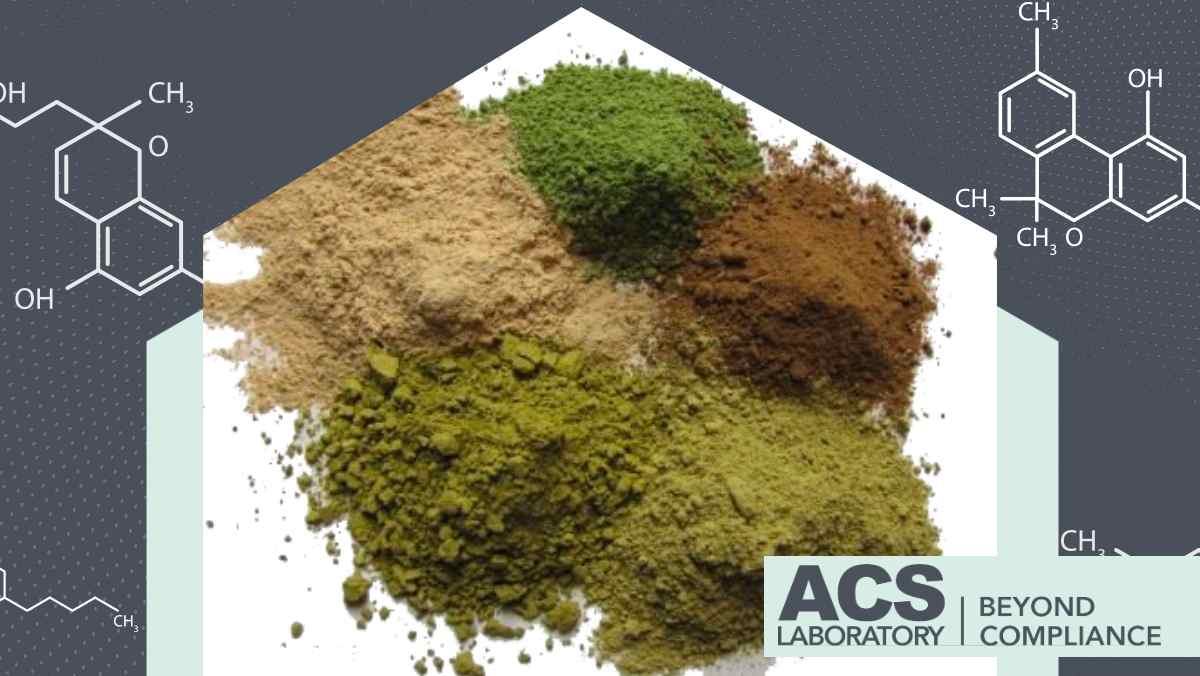Unveiling the Spectrum: A Deep Dive into Kratom Colors and Strains
- The Kratom Color Conundrum
- The Universal Source: Kratom Trees
- Kratom Processing Methods
- Why do Kratom Colors Exhibit Different Effects? A Scientific Inquiry
- The Science Behind Kratom Colors
- Future Research Opportunities
- Why Kratom Potency Testing Matters
- Bottom Line
The Kratom Color Conundrum
Kratom, a tropical Southeast Asian tree, has garnered global attention for its therapeutic potential. However, kratom research and education trails far behind cannabis awareness in the West. Notably, consumers are rightfully confused about kratom color strains, how they’re produced, and the effects they elicit.
ACS Laboratory, in partnership with Mitra Science, a global leader in the Kratom industry, wants to enhance public kratom education.
This article delves deep into kratom color science, production, and physiological effects.
The Universal Source: Kratom Trees
Regardless of the final product's appearance, all kratom leaves are harvested from the same trees. So, unlike cannabis, kratom strains do not imply distinct biological characteristics. Instead, “kratom strains” refer to the post-harvest blending, drying, and fermenting methods that elicit unique color and effects.
Red, green, white, and gold are the most common kratom colors, with effects ranging from energizing to sedative.
Kratom Processing Methods
Blending Recipes:
Kratom strains can be created by blending different colors. The specific ratios vary between vendors, leading to unique products. Some strains, like Maeng Da, are known for their strong effects and vibrant color.
Drying Methods:
The drying process is pivotal in determining kratom strain characteristics. For example, air-drying fresh leaves produces green varieties. Indoor high-humidity drying for two to three days before sun exposure (or simply extended sun exposure) produces white kratom. These methods influence the end product's color and the potential alkaloid profile (active ingredients).
Need a Test or Have a Question
Fermentation:
Fermentation is another method that differentiates strains. In the context of kratom, fermentation refers to the enzymatic and microbial breakdown of organic substances within the leaves. This biological process occurs under controlled conditions, usually without oxygen, transforming the alkaloids. The duration of fermentation and the conditions can result in varying reported effects and colors.
Why do Kratom Colors Exhibit Different Effects? A Scientific Inquiry
Anecdotal evidence from people across the globe suggests kratom colors produce distinct effects, even though they come from the same tree.
Some experts theorize that post-harvest kratom processing could lead to a phenomenon akin to the decarboxylation in cannabis. Just as heat can change a non-psychoactive compound (THCa) into a psychoactive one (THC), heat-based processing methods might also transform kratom’s active ingredients.
Additionally, in cannabis, a well-preserved flower will see its THC content gradually degrade into CBN if left untouched. Processors decelerate this process to preserve THC levels by managing four environmental factors: temperature, humidity, air, and light. Similarly, fermenting and drying kratom leaves might also influence the final potency and effect profile.
The Science Behind Kratom Colors
Red Kratom:
Red kratom leaves are fermented in plastic bags for about three days, depending on external conditions such as humidity and temperature, and then dried. This fermentation process gives red kratom its color and, purportedly, its peaceful and relaxing effects.
Green Kratom:
Green Kratom is produced by air-drying fresh leaves. Users report this variety supports feelings of motivation and enhanced focus.
White Kratom:
Manufacturers produce white kratom by blending green and red strains with the leaf’s 'bones' (veins) to achieve the desired color.
White kratom can also be produced by drying leaves for an extended period in direct sunlight or indoors with high humidity for two to three days before sun drying.
This extended drying process contributes to the color and possibly the well-known energizing, coffee-like effect.
Gold Kratom
Gold kratom is produced in two distinct ways. One method involves a similar process to red kratom but with a shorter fermentation period of two days, followed by air drying.
Another method involves blending red and green kratom in varying ratios, such as 50:50, 60:40, or 40:60, depending on the base colors. This blending process allows for various gold kratom products with potentially differing effects. Given its varied origins, gold kratom typically yields hybrid-like outcomes.
Future Research Opportunities
Recent presentations by Dr. Christopher McCurdy, Dr. Oliver Grundmann, and Dr. Brian Pearson at the University of Florida indicate kratom strains or cultivars could have different potency levels and alkaloid profiles. If proven true, this assertion would radically change the conversation and transform kratom science as we know it today. However, researchers must uncover more evidence.
Until then, the term "kratom strains" strictly refers to post-harvest processing methods and blending recipes that create the diverse range of products available in the market.
Why Kratom Potency Testing Matters
Most laboratories test for two to five alkaloids in kratom, leaving a massive gap in the industry’s ability to understand varying effects across products. However, ACS Laboratory, in partnership with Mitra Science, has taken a step further by testing for eight kratom alkaloids, setting a new global standard.
With over 44 alkaloids identified in kratom, along with terpenoids and other active phytochemicals, kratom's complex profile is evident. ACS aims to expand its testing spectrum as more Certified Reference Materials (CRMs) become available.
Bottom Line
The future holds promise as scientific exploration may eventually validate consumers’ diverse experiences across kratom color strains. Bridging anecdotal insights with scientific investigation is crucial for a more informed and responsible use. ACS Laboratory looks forward to contributing to a more comprehensive understanding of kratom as it pionneers the indusry's most comprehensive kratom testing program.
Contact us to start testing kratom today.







.png)
.png)
.png)
.png)
.png)